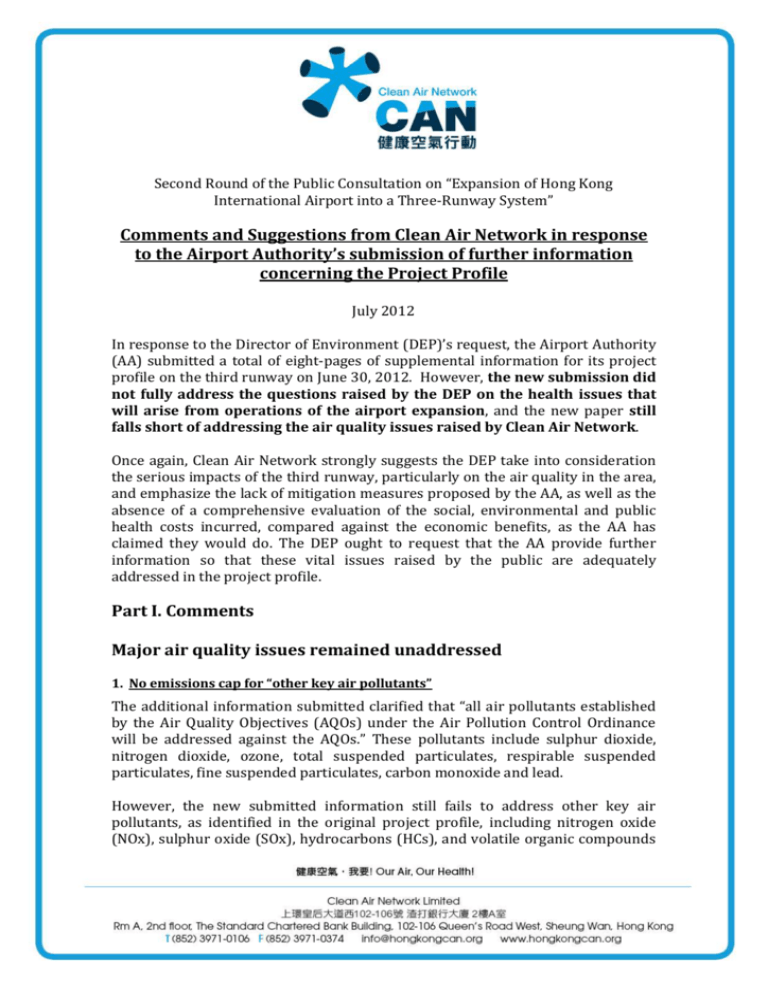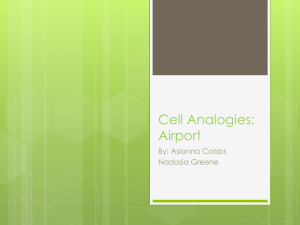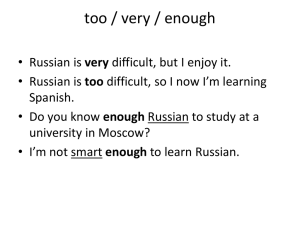Clean-Air-Networks-comments-in-response-to-the-Airport
advertisement

Second Round of the Public Consultation on “Expansion of Hong Kong International Airport into a Three-Runway System” Comments and Suggestions from Clean Air Network in response to the Airport Authority’s submission of further information concerning the Project Profile July 2012 In response to the Director of Environment (DEP)’s request, the Airport Authority (AA) submitted a total of eight-pages of supplemental information for its project profile on the third runway on June 30, 2012. However, the new submission did not fully address the questions raised by the DEP on the health issues that will arise from operations of the airport expansion, and the new paper still falls short of addressing the air quality issues raised by Clean Air Network. Once again, Clean Air Network strongly suggests the DEP take into consideration the serious impacts of the third runway, particularly on the air quality in the area, and emphasize the lack of mitigation measures proposed by the AA, as well as the absence of a comprehensive evaluation of the social, environmental and public health costs incurred, compared against the economic benefits, as the AA has claimed they would do. The DEP ought to request that the AA provide further information so that these vital issues raised by the public are adequately addressed in the project profile. Part I. Comments Major air quality issues remained unaddressed 1. No emissions cap for “other key air pollutants” The additional information submitted clarified that “all air pollutants established by the Air Quality Objectives (AQOs) under the Air Pollution Control Ordinance will be addressed against the AQOs.” These pollutants include sulphur dioxide, nitrogen dioxide, ozone, total suspended particulates, respirable suspended particulates, fine suspended particulates, carbon monoxide and lead. However, the new submitted information still fails to address other key air pollutants, as identified in the original project profile, including nitrogen oxide (NOx), sulphur oxide (SOx), hydrocarbons (HCs), and volatile organic compounds (VOCs). These pollutants do not have ambient concentration standards in Hong Kong, but they are of concern with regards to health, especially NOx and VOCs, which are the precursors to the harmful secondary pollutant ozone. They are emitted at large quantities locally and levels are bound to rise as a result of the increased traffic flow due to the airport expansion. The submitted information mentions that “other key potential toxic air pollutants will be identified and evaluated using methods, standards or criteria adopted by recognized international organizations,” however, NOx, SOx, and most of the HCs and VOCs are not classified as toxic air pollutants, and therefore, there is no statutory limit on the amount of these pollutants that will be generated by the expansion of the airport operation, as well as the increased road traffic induced. 2. Insufficient mitigation measures The additional information submitted provided no clarification or further material on mitigation measures for relieving the negative impacts of the airport expansion on air quality. As pointed out in the first public consultation feedback from Clean Air Network, the mitigation measures listed in the original project profile (Section 5.1) are insufficient to relieve the air pollution created by the construction of the third runway, especially during the operation phase. Electrifying or greening a fleet of only 174 vehicles will not have any significant impact in reducing vehicular emissions in comparison with the roadside emissions that will increase with higher traffic flow as a result of the new runway, e.g. public buses to and from the airport, as well as trucks and other vehicles operated within the airport areas. The initiative should go further and require all vehicles within the airport areas to meet stricter emissions standards or even be electric or hybrid vehicles. In addition, the project profile is limited in terms of identifying mitigation measures within airport areas, but the identified air sensitive receivers (ASRs) affected by this project reach as far as Tung Chung and North Lantau. With reference to the ARUP consultancy report (see table below), there were mitigation measures targeting emissions from the PRD, Hong Kong, and airport operations, which are not mentioned in the newly submitted project profile. Even the effectiveness of the mitigation measures suggested in the report is highly questionable because of the presumptions made with regards to the HKSAR’s and the Pearl River Delta’s emission reduction measures, some of which are not going to be implemented. The incentive scheme for replacing pre-Euro and Euro I vehicles, a measure launched by the Hong Kong Government, is a case in point. With a rate of only 30% of eligible vehicles applying for that scheme, it is wrong to assume that all the proposed measures will be effective in contributing to a 40% NOx reduction. It is also problematic that each itemized mitigation reduction measure’s estimated percentage emission reduction potential is listed, but the overall reduction percentage of all of these measures combined is not. One more point to note is that these mitigation measures and estimations do not take into account the accumulated impacts brought about by other infrastructure projects being simultaneously developed, e.g. Lantau Logistics Park, Waste Management Facilities, the Hong Kong-Zhuhai-Macao Bridge, etc. Source: Summary of mitigation potential (ARUP report, 2010) Measures Electrification of aviation ground support equipment Automatic Dependent Surveillance Broadcast (ADS-B) Technology Tightening Aviation Emission standards PRD Emission Measures HKSAR Emission Measures (Phase I + II + III measures) Estimated Percentage Emission Reduction Potential NOx 10% PM10 18% 2% 2% 50% 10% 40% NA NA 30% Neglect of air pollution health issues raised by the DEP In his letter to the AA, the DEP raised concerns about the health issues related to the third runway - “There is no mentioning of health issues. Please clarify whether there will be any health issue arising from the operation of the expansion of airport. If affirmative, elaboration on this issue has to be put down in the revised project profile.” In addressing the DEP’s concerns, the additional information submitted only mentioned health issues related to aircraft noise. It did not make any further mention of other health costs that will inevitably result from the airport expansion, other than to emphasize the adoption of the new AQOs, with the assumption that the standards outlined by the new AQOs are adequate enough to protect public health. The worsening levels of air pollution have become an enormous public health and social burden for Hong Kong. There is incontrovertible evidence that current pollution levels are causing an epidemic of health problems arising from damage to lungs, heart and blood vessels. According to the Hedley Environmental Index, in the past five years, air pollution has killed an estimated 8 to 9 people a day and resulted in about 7.4 million visits to doctors, 160,000 days of hospitalization, and HK$40 billion in health-related community costs annually. That amount contrasts sharply with the projected annual economic net value of HK$18 billion for building the Hong Kong International Airport third runway, indicating that the health and social costs of the third runway construction are too high to be ignored. Although it is not a statuary requirement to conduct a health impact assessment according to EIAO or the technical memorandum, AA, as a socially responsible organization, should take the initiative to assess and reveal the information on all air pollution-related health impacts and the social burden that will be incurred by the third runway. However, the AA’s neglectful treatment of air pollution as Hong Kong’s biggest public health crisis and failure to fully address the health issues raised by the DEP has created a disgraceful situation for the AA and greatly disappointed the public. Part II. Suggestions As mentioned before in the first public consultation feedback, Clean Air Network strongly recommends the following measures and guidelines for AA and the government to consider during the official EIA and project execution process. Clean Air Network believes these measures and guidelines are essential for the protection of health among residents in the airport area and beyond, and for maintaining the reputation of Hong Kong as an enviable business center and lifestyle destination. CAN’s Suggestions: Set an emissions cap for the non-AQO-regulated air pollutants, especially NOx and VOCs; Conduct a Social Return On Investment (SROI) analysis to assess the hidden social and environment costs due to increased air pollution in the project affected area, especially the health-related community costs of air pollution due to the expansion of Airport operations. (For more information on SROI, please refer to the first public consultation feedback from Clean Air Network); Initiate and perform more and solid mitigation measures to reduce emissions in the project affected area, such as requiring all vehicles within the airport areas to meet stricter emissions standards or even turn to electric or hybrid vehicles; Work with the Hong Kong Government and the business sector to reduce emissions from other local and regional sources; Assess the accumulative effect of other parallel infrastructure projects that are on-going in the adjacent area, such as Lantau Logistics Park, Waste Management Facilities, the Hong Kong-Zhuhai-Macao Bridge, etc; Conduct a compressive and transparent analysis taking into account of all emission sources and solid mitigation measures, and maintain transparency when communicating the result to the public.








